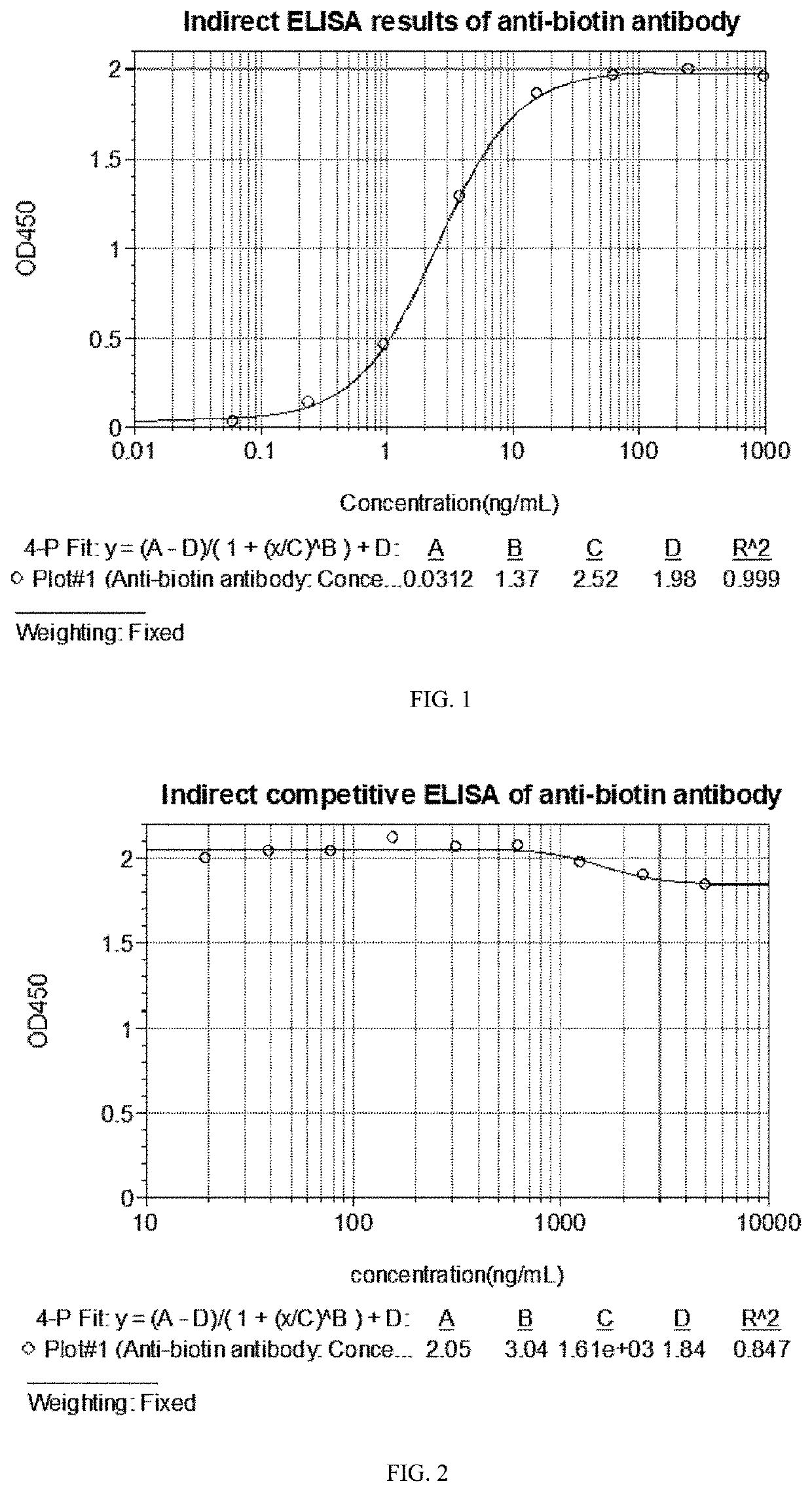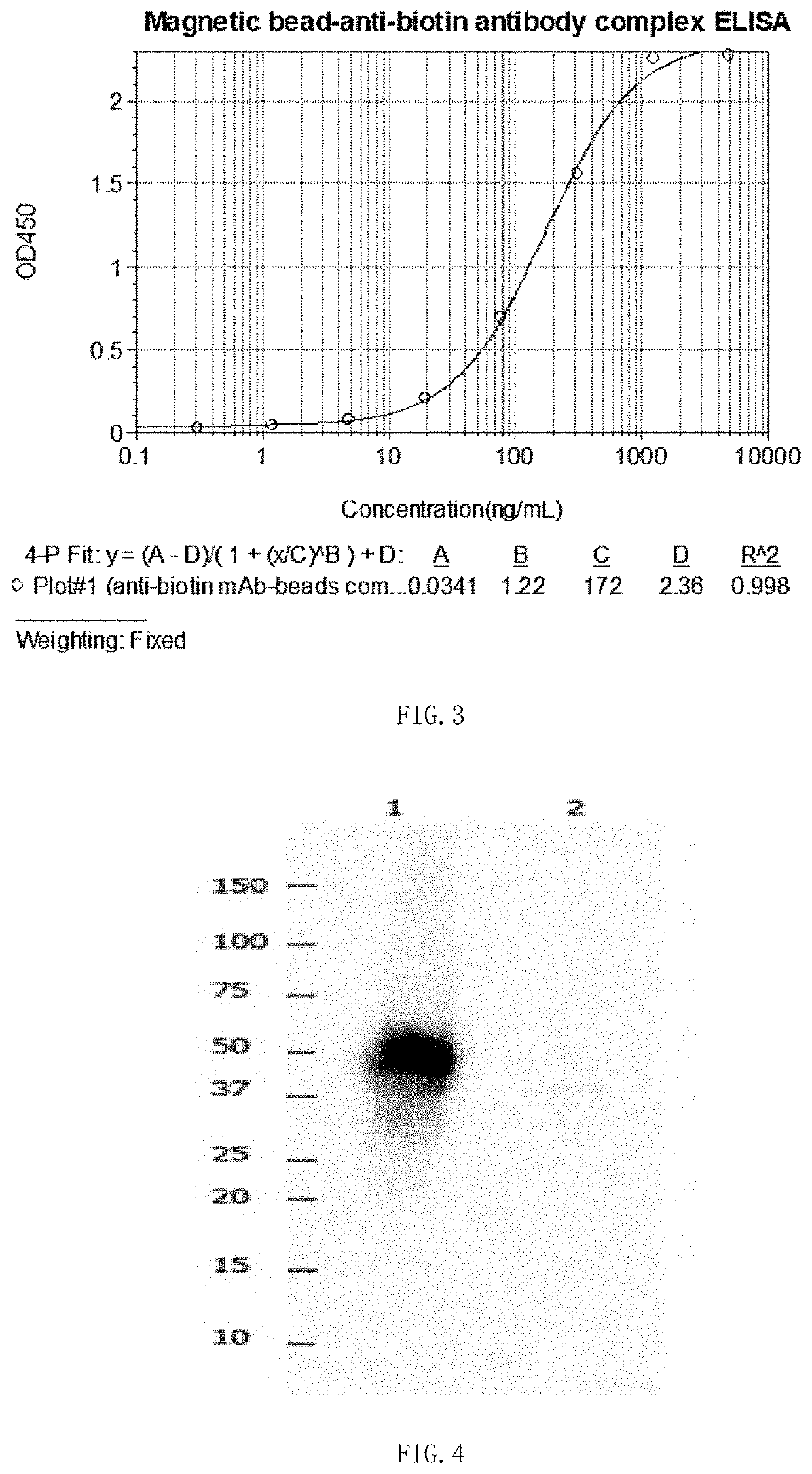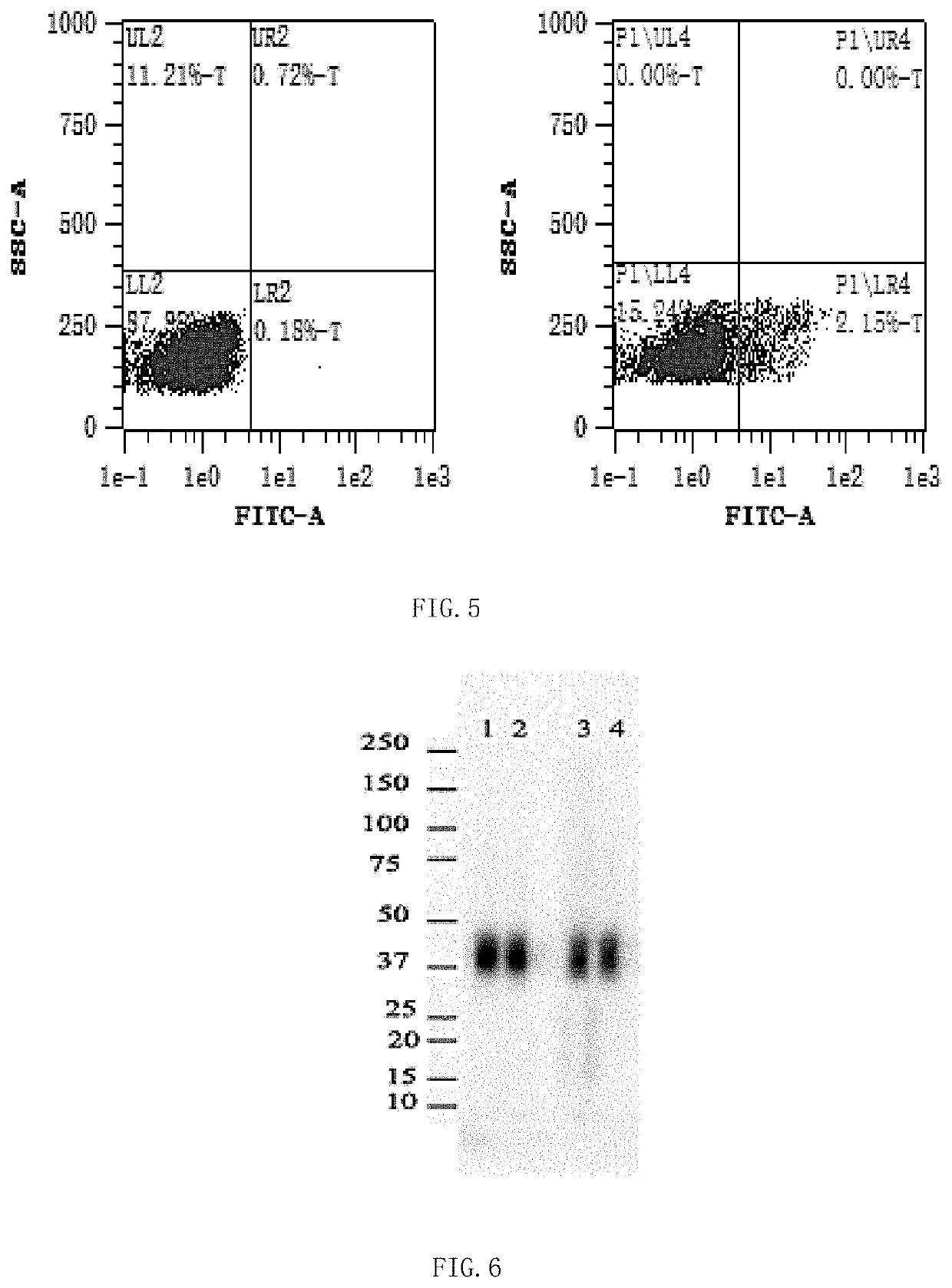Anti-biotin antibody and application thereof
a technology of anti-biotin and antibody, applied in the field of biotechnology, can solve the problems of non-specific binding between biotin and avidin, further affecting the sensitivity and accuracy of detection, etc., and achieves the effects of good bias, good controllability and repeatability, and effective labeling
- Summary
- Abstract
- Description
- Claims
- Application Information
AI Technical Summary
Benefits of technology
Problems solved by technology
Method used
Image
Examples
example 1
[0033]An anti-biotin antibody disclosed in the technical solution is a rabbit monoclonal antibody. The antibody uses a Kabat method to analyze CDR-H1, CDR-H2, CDR-H3, CDR-L1, CDR-L2 and CDR-L3 including the following polypeptide sequences:
[0034](1) CDR-H1 including at least 6 amino acid sequences of SEQ ID NO: 1, the sequence being SSYWIC;
[0035](2) CDR-H2 comprising at least 18 amino acid sequences of SEQ ID NO: 2, the sequence being CIDAGSSGSTYYARWVNG;
[0036](3) CDR-H3 comprising at least 14 amino acid sequences of SEQ ID NO: 3, the sequence being EGDWGAPIYYGVDL;
[0037](4) CDR-L1 comprising at least 13 amino acid sequences of SEQ ID NO: 4, the sequence being QSSQSVYNNNQLS;
[0038](5) CDR-L2 comprising at least 7 amino acid sequences of SEQ ID NO: 5, the sequence being YASTLAS; and
[0039](6) CDR-L3 comprising at least 12 amino acid sequences of SEQ ID NO: 6, the sequence being LGGYYDYADTSA.
[0040]The anti-biotin antibody specifically binds to non-free biotin.
[0041]The following Examples 2...
example 2
cognition of Biotin Labeled Antigens
[0043]A biotin conjugate biotin-X was diluted to a suitable concentration, e.g., 1 μg / mL. An ELISA plate was coated with the biotin conjugate biotin-X, sealed with a sealing film, and incubated at 4° C. overnight.
[0044]The next day, the ELISA plate was placed on a plate washer, washed with PBST 3 times, and blocked with skimmed milk or a BSA blocking buffer. The ELISA plate was incubated on a shaker at 30° C. for 1 about h.
[0045]The anti-biotin antibody was pre-diluted to a suitable concentration, e.g., 1 μg / mL. Then serial dilution was made by 8 times. After block, the plate was washed 3 times. 50 μL of diluted anti-biotin antibody was added to each well. The plate was incubated at 30° C. on a shaker for about 1 h.
[0046]After the plate was washed, 50 μL of HRP-conjugated goat anti-rabbit IgG secondary antibody was added to each well. The plate was incubated at 30° C. on a shaker for about 45 min.
[0047]After the plate was washed, 50 μL of TMB was ...
example 3
ty to Biotin Labeled Antigens without Reaction with Free Biotin
[0050]A biotin conjugate biotin-X was diluted to a suitable concentration, e.g., 1 μg / mL. An ELISA plate was coated with the biotin conjugate biotin-X, sealed with a sealing film, and incubated at 4° C. overnight.
[0051]The next day, the ELISA plate was placed on a plate washer, washed with PBST 3 times, and blocked with skimmed milk or a BSA blocking buffer. The ELISA plate was incubated on a shaker at 30° C. for 1 h.
[0052]The anti-biotin antibody was pre-diluted to an appropriate concentration for use. Free molecules of biotin were pre-adjusted to a suitable starting concentration. Then serial dilution was made by 10 times. 50 μL of the anti-biotin antibody and 50 μL of the diluted free molecules of biotin were mixed on another clean dilution plate. Then the plate was incubated at 30° C. and 100 rpm on a shaker for about 30 min.
[0053]After the ELISA plate was washed, 50 μL of the mixture in step (3) was added to each we...
PUM
| Property | Measurement | Unit |
|---|---|---|
| time | aaaaa | aaaaa |
| concentration | aaaaa | aaaaa |
| concentration | aaaaa | aaaaa |
Abstract
Description
Claims
Application Information
 Login to View More
Login to View More - R&D
- Intellectual Property
- Life Sciences
- Materials
- Tech Scout
- Unparalleled Data Quality
- Higher Quality Content
- 60% Fewer Hallucinations
Browse by: Latest US Patents, China's latest patents, Technical Efficacy Thesaurus, Application Domain, Technology Topic, Popular Technical Reports.
© 2025 PatSnap. All rights reserved.Legal|Privacy policy|Modern Slavery Act Transparency Statement|Sitemap|About US| Contact US: help@patsnap.com



